Tomato Troubleshooting – a guide to Common Problems
In general tomatoes are easy to grow plants and will usually produce something no matter what you do to them but, for good yields of high quality fruit they do need some maintenance to grow really well. Fortunately they are vigourous plants so the majority of issues you might encounter can be turned around and will usually result in a reasonable harvest once the root cause has been identified and corrected.
This week, I am concentrating on fruit problems as I have had a number of emails recently, particularly about fruit not setting which is when the tomatoes flower but no fruit is produced. Given the recent hot weather most of us have been having, the most likely problem is temperature but let's look at fruiting in a little more detail which should help us to understand, and hopefully avoid any potential problems.
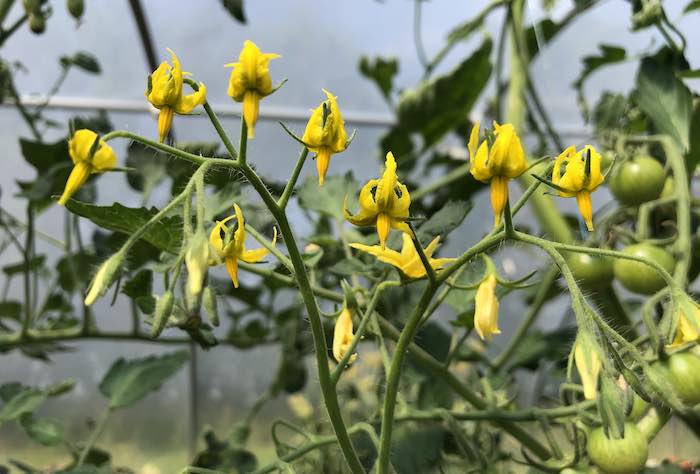
Blossom drop and poor fruit set When any fruiting plant fails to produce fruit it will most likely be a reaction to stress of some kind. Essentially the plant has decided that it's too risky to produce fruit (which takes a lot of energy) in the current conditions so has either dropped its flowers (blossom drop) or dropped or ceased growth of immature fruit (poor fruit set). The plant has favoured its own survival over its fruit producing role but, in the case of a tomato, will flower and fruit again once conditions improve.
The stress that halts fruit production could be due to a variety of factors, the most common being lack of moisture in the soil, excessive use of fertilizer or high temperatures, we just need to figure out which one it is. As it happens one of our fabulous new customers emailed me for advice last week on blossom drop and had the foresight to include some images which was very helpful in diagnosing her problem, two of which, with her permission, I include below.
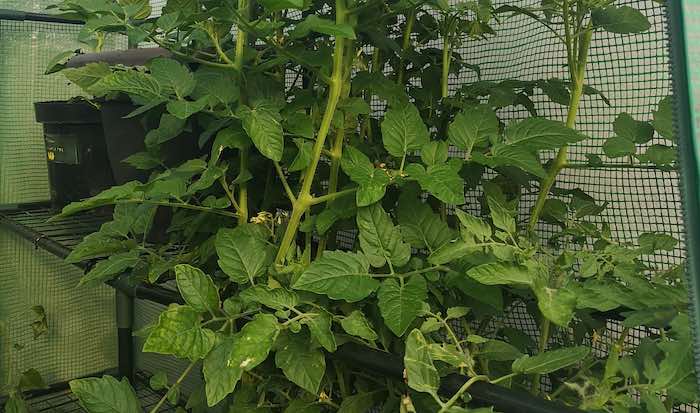
The first thing experienced tomato growers will notice is the side shoots have not been removed which has resulted in multiple competing stems on a single plant. Part of the issue is that the tomato is putting most of its energy into producing new growth and is trying to make itself as big as it can. This will result in more potential fruit (the more vines you have, the more fruit trusses you have) but, because our season in much shorter than the tomato's native South America, the fruit will not have enough time to ripen.
In our climate we must restrict the number of vines and therefore the number of fruiting trusses to force the plant to put it's energy into ripening fruit before the season draws to ma close in October.
While allowing tall growing tomatoes to grow in this way will reduce the yield of quality fruit, it should not directly lead to blossom drop. The issue could arise indirectly however, especially if the plant is grown in a container (in this case a gro-bag), because the large amount of foliage is drawing nutrients and water from a relatively small space.
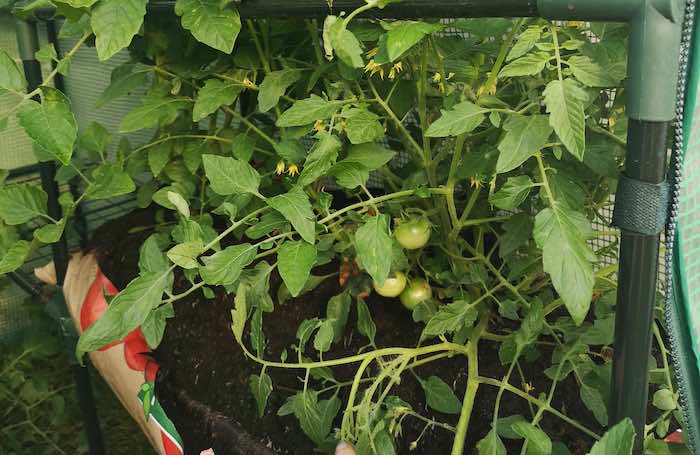
The effect of heat on fruiting Eagle eyed readers will also have noticed that the tomatoes are growing in a relatively small hobby tunnel which, with a door on one end only and no other ventilation, can get very hot inside. My own large but well ventilated tunnel was reaching 45˚C in the early afternoon in the recent hot weather, I imagine this little structure was no different, possibly worse.
The good news is that while the flowers developing during the high temperature period may have dropped off, new flowers produced when the weather cools will bear fruit. We may therefore end up with a portion of the tomato vine without fruit (the length of the barren vine being dependent on the length of the heatwave) but plenty of new flowers and potential tomatoes further up the plant.
Interestingly, the fact that our novice gardener left her tomato unpruned may have worked to her advantage. I would still advise pruning but if the mid part of the stem is devoid of fruit, she will be better to maintain 2, perhaps 3 main stems so she can make the most of any new growth (and new flower trusses) produced in the cooler weather that has already begun this week. So, if you're reading this Rozz, that's what you should do, if you need me to clarify anything drop me a mail.
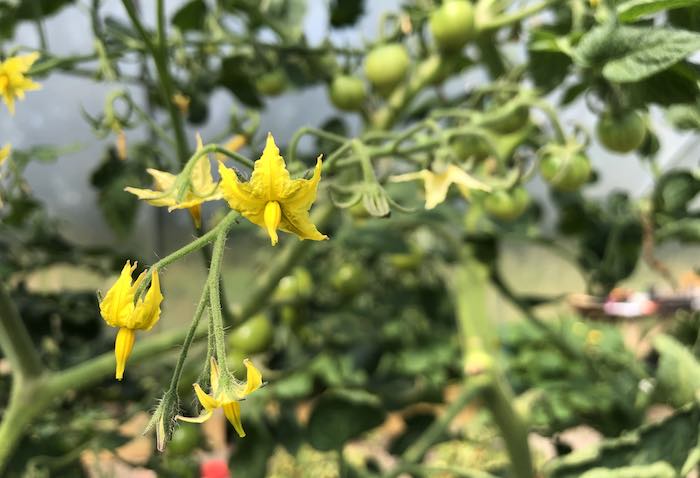
Pollination The other possible reason for blossom drop is poor pollination though in my experience it is the least likely. Tomato flowers are self pollinating so pollination problems are rare, particularly outdoors where wind will provide enough movement to distribute pollen. In the windless environment of a polytunnel or greenhouse you may need to help plants along by gently tapping flower trusses but I have never had to do this (although I may have inadvertently done it when pruning).
The exception is our friend hot weather as anything over 32˚C will result in lower pollen quality and quantity. If heat is the issue, there is little point in trying to aid pollination manually as it is the male parts of the plant and the pollen itself that have been damaged. As with blossom drop from hot conditions, the cure is to lower the temperature.

Blossom end rot By the way, no sniggers please at Rozz's tomatoes, this is her first year growing and she has done extremely well, especially with a very tricky season. Here is another photo, this time from a more experienced grower who should know better (me) showing blossom end rot on the cherry plumb variety, Santonio.
Blossom end rot is the result of a lack of calcium when the fruit is developing and can be due to acidic soil, excessive soluble salts in the soil or, in this case, lack of water to transport sufficient calcium to swelling fruit. Fast developing plants suddenly exposed to hot, dry conditions may show signs of blossom end rot as a dark, leathery patch on the bottom of the tomato. The problem is relatively common in gro-bags and containers because the compost is more prone to drying out but can also be an issue in larger beds in hot weather. If growing different tomato types, blossom end rot will show first on plum types (as is the case here) but others will soon follow if the underlying issue isn't attended to.
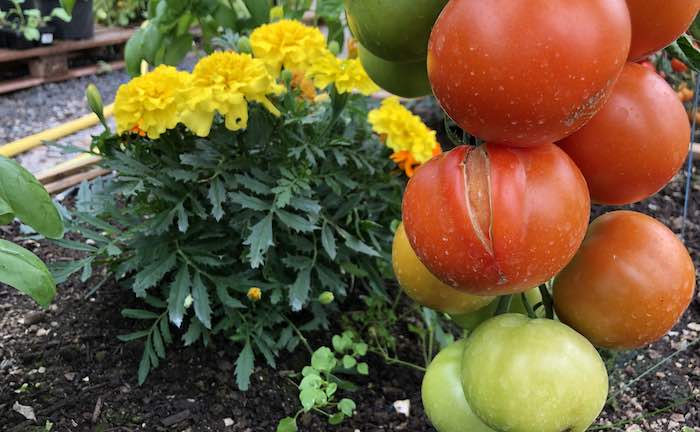
Splitting fruit Another result of poor water management in hot weather (photo from the same experienced grower's polytunnel) is splitting fruit. The problem here is watering after a dry spell results in rapid growth of the fruit before the skin has time to catch up so it splits under the pressure. If bed have been left on the dry side, e.g. if you were away for a few days, it is better to water lightly in the beginning and gradually increase the amount over a few days. Naturally I didn't do this so I could show you a photo of the problem.
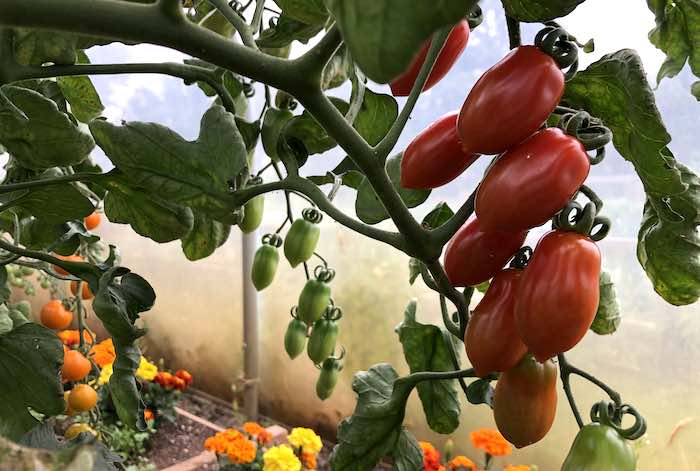
That's about it for this week, I hope the above was helpful to some new growers out there. See you next week, Andrew
